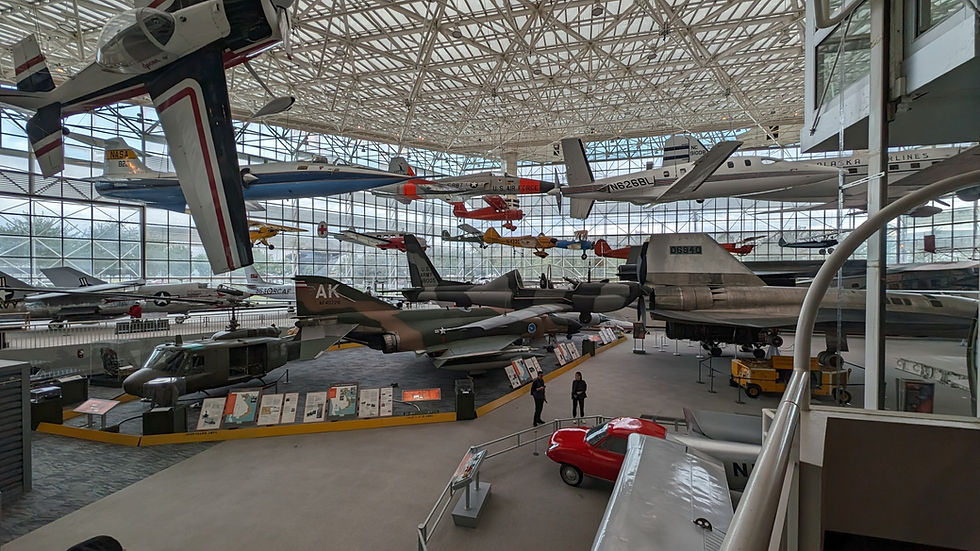
Apollo 17 Lunar Module mock-up
(Click on Picture to Bring Up Full Image)

The Apollo 17 Lunar Module was the final crewed lunar lander in NASA's Apollo program, designated LM-12 during manufacturing. Built by Grumman Aerospace, it launched on December 7, 1972. The LM consisted of two stages: a descent stage for landing and an ascent stage (shown in the photo) for returning to lunar orbit. Apollo 17's LM, nicknamed "Challenger," landed in the Taurus-Littrow valley on December 11, 1972. This mission marked the last time humans landed on the Moon and the only Apollo mission to include a scientist-astronaut.
The Lunar Module weighed approximately 33,500 pounds when fully fueled and stood 14 feet tall. Its descent stage used a throttleable rocket engine producing up to 10,500 pounds of thrust, while the ascent stage engine generated 3,500 pounds of thrust. The crew compartment was unpressurized during surface operations, requiring the astronauts to wear spacesuits throughout their stay. The Apollo 17 surface mission was the longest, lasting 75 hours. The mission returned 243 pounds of lunar samples.
